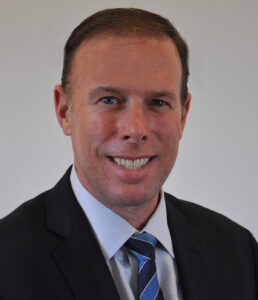

Flood insurance may be a canary in the coal mine when it comes to the lasting impacts of climate change.
Aon Edge CEO John Dickson recently talked with Elizabeth Blosfield, deputy editor for Carrier Management, about how insurers and property owners can use flood insurance to navigate an unpredictable climate environment. He was speaking as part of Carrier Management’s monthly Strategy Sessions webinar series.
“You have government controls that are a little bit out of date. You have maps that are fully out of date, and you have a rapidly changing environment,” Dickson said. “All of those create challenges for the industry.”
Climate Impacts
Dickson said that major storms are popping up earlier in the season, and a warmer environment means these storms can hold more water. When storms stall or slowly make their way inland, they wreak havoc not only on waterfront communities but in areas far from the coastline, as well.

In many areas of the country, flood maps are decades old and out of step with the current climate conditions, Dickson said. Out-of-date maps mean out-of-date decisions for flood preparation, including insurance. “(If) you’re using history, that’s from a flood perspective out of date,” he said. “And so, unfortunately, water doesn’t know to stop at these lines that we draw upon maps.”
It’s not just rainfall and tropical storms that insurers and clients need to be thinking about. While one may think wildfires are on the other end of the spectrum, widespread fires contribute to flooding. By destroying vegetation, wildfires limit the ability of the land to absorb water, and even modest amounts of rainfall can trigger devastating effects, Dickson explained.
Educating the Public
With these challenges in mind, he said several significant issues exist regarding public awareness of flood insurance.
For one, many property owners incorrectly assume that flooding is covered in their standard property insurance policy. In fact, property owners need to have a separate policy to cover flooding.
And two, Dickson said, is denial. Even when people see the devastation caused by flooding, they empathize but then fall back to the attitude of “it can’t happen to me,” he said.
To combat this, insurance professionals need to proactively educate homeowners and property owners about their coverage, Dickson said.
“Making sure that they understand what’s covered, what’s not covered, what options they have for coverage—that’s critical,” he said. “And the other piece that’s important to remember when we talk about a flood… where it rains, it can flood. And it turns out that it can rain anywhere. So, that means it can flood anywhere.”
Another educational hurdle when it comes to flood insurance is that those who live outside of defined flood zones often forgo coverage if it is not required, Dickson said. Instead, they rely on historical data as evidence that their property is not in danger.
“Only certain people are required to buy flood insurance. And again, it goes back to the lines that we’ve drawn on these maps,” she said. “If those lines are hard and fast and the water can obey the lines that we draw, this is a great, great structure. Unfortunately, that’s not the case.”
The Role of AI
But it’s not all bad news. Dickson said that artificial intelligence and other technologies are having an increased impact on coverage and recovery.
“You’re seeing (digital and AI) models become more robust, more powerful,” he said, adding that these technologies can create views on risk by looking at millions of event scenarios.
Technology has also improved the claims process and the ability to get funding out to claimants more quickly.
“Quite frankly, I think we’re just scratching the surface of where we can go with this, and I’m very excited to see where it heads,” he said.
Team Effort, Consumer Buy-In
Adapting to the evolving elements that affect flood insurance will require cooperation among all stakeholders, according to Dickson, who said it will take a sustained effort of communication to shift public awareness and opinion.
“It has to work for the property owners. It has to work for our land use practitioners and flood plain managers. And it has to work for the insurance community and the reinsurance community as well,” he said. “And when all of those stakeholders can work together on how to respond to this absolutely devastating catastrophe, I think you’ll see massive changes for the good, for all property owners, all communities across the country.”
Check out the rest of the conversation by viewing this Strategy Sessions webinar on demand.